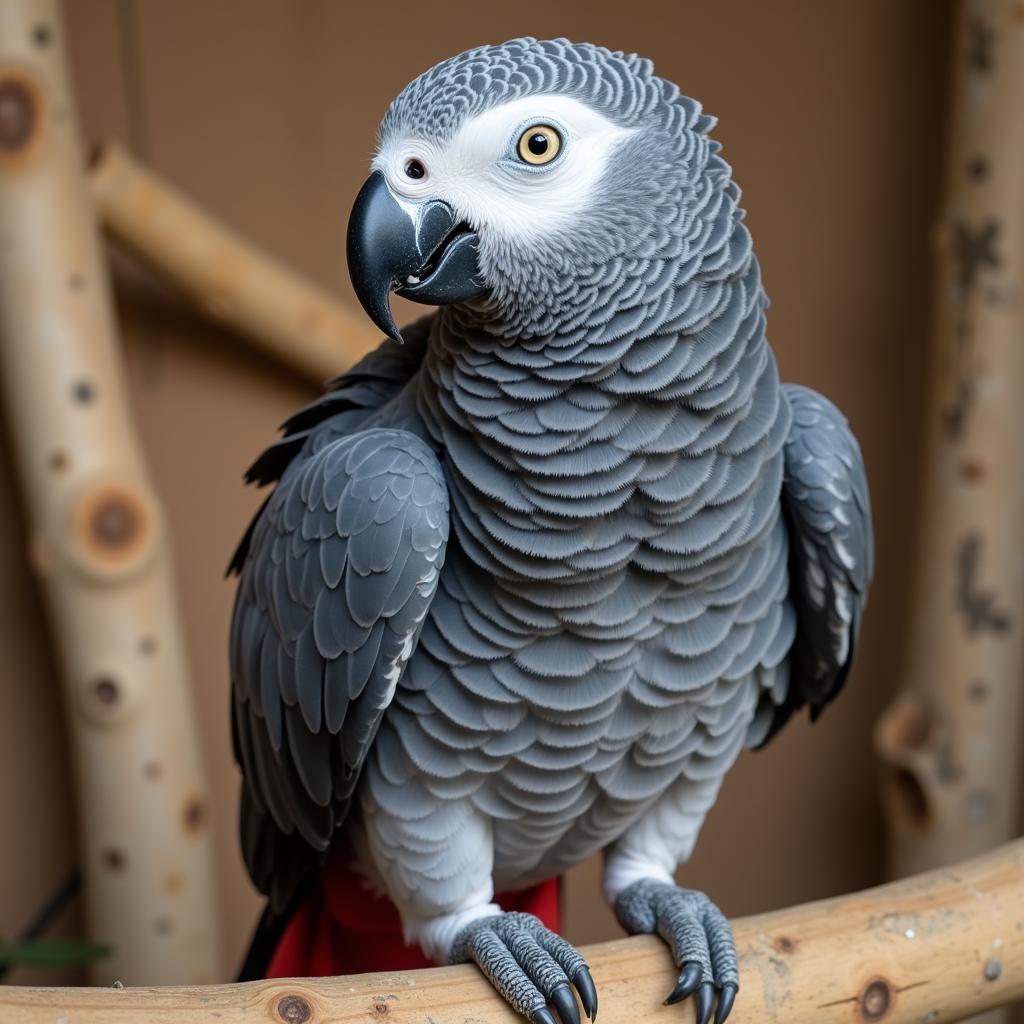Understanding the African Gray Parrot Molt
African Gray Parrot Molt is a natural process where these intelligent birds shed old feathers and grow new ones. It’s a vital part of their life cycle, ensuring they maintain optimal plumage for flight and insulation. Understanding this process is crucial for every African gray owner.
What is Molting in African Gray Parrots?
Molting is essentially a feather replacement cycle. Just like humans shed hair, African grays shed their feathers periodically. This process allows them to replace damaged or worn feathers with fresh, vibrant ones.
The Molting Cycle of an African Gray Parrot
African grays typically molt once or twice a year, usually in the spring and fall. The entire molting process can take several weeks, sometimes up to a couple of months. During this time, you might notice your parrot dropping feathers more frequently than usual. The new feathers, called “pin feathers,” emerge encased in a keratin sheath. As the feather grows, the sheath disintegrates, revealing the new, vibrant plumage.
Signs of Molting in African Grays
Recognizing the signs of molting can help you provide the necessary support for your feathered friend. Some common signs include increased feather drop, the appearance of pin feathers, and occasionally, slight behavioral changes. Some birds may become a little more irritable or quieter during a molt.
How to Support Your African Gray During a Molt
Molting can be an energetically demanding process for African grays. Providing the right nutrition and environment is essential during this period. Offer a balanced diet rich in vitamins, minerals, and protein to support feather growth. Ensure your parrot has access to fresh water at all times. Also, consider providing a warm and humid environment, as this can help soften the keratin sheaths and facilitate feather growth.
Nutritional Needs During Molting
A nutritious diet is particularly important during a molt. Offer a variety of fresh fruits and vegetables, along with a high-quality parrot pellet. Supplements containing essential fatty acids can also be beneficial for feather health.
Common Questions About African Gray Parrot Molt
Why is my African gray molting? Molting is a natural and necessary process for feather renewal and maintenance.
How long does molting last? The molting period can vary, but it generally lasts several weeks to a couple of months.
Is molting painful for African grays? The emergence of new feathers can sometimes be itchy or slightly uncomfortable, but it shouldn’t be painful.
What should I feed my African gray during a molt? Provide a balanced diet rich in nutrients, especially protein and essential fatty acids, to support feather growth.
Can I bathe my African gray during a molt? Bathing can actually be helpful during a molt, as it can help soften the pin feathers and remove dander.
Conclusion
African gray parrot molt is a natural and essential part of their life cycle. Understanding this process allows owners to provide the best care and support during this period. By ensuring your African gray has a nutritious diet, a comfortable environment, and plenty of love and attention, you can help them navigate this process smoothly and emerge with a beautiful, healthy plumage. Remember, regular molting is a sign of a healthy bird. If you have any concerns about your African gray’s molt, consult with an avian veterinarian.  Healthy African Gray Parrot After Molt
Healthy African Gray Parrot After Molt
FAQ:
- How often do African Gray Parrots molt? Typically once or twice a year.
- What are the signs of molting? Increased feather drop, pin feathers, and possible behavioral changes.
- How can I help my parrot during a molt? Provide a balanced diet, fresh water, and a warm, humid environment.
- Is molting painful? It can be itchy or slightly uncomfortable, but not typically painful.
- When should I contact a vet? If your parrot shows signs of distress, excessive feather loss, or other unusual symptoms.
- What should I avoid during a molt? Stressful situations and inadequate nutrition.
- How long does a molt typically last? Several weeks to a few months.
For further information on parrot care, please explore our other articles on African Gray Parrots. Having trouble with your parrot’s molt? Contact us! Phone: +255768904061, Email: [email protected] or visit us at Mbarali DC Mawindi, Kangaga, Tanzania. We have a 24/7 customer service team ready to assist you.
